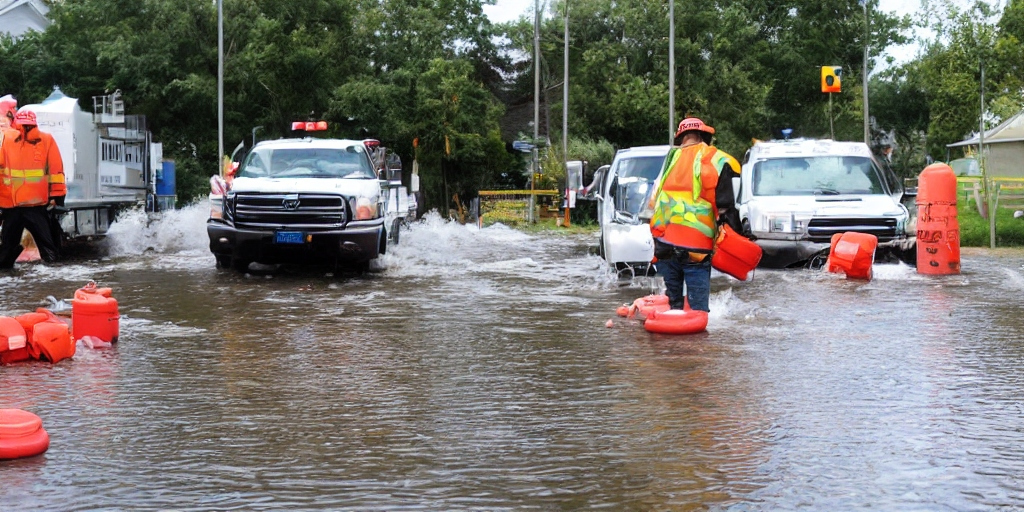Introduction
Dealing with a sewage flood is a challenging and unpleasant experience that requires immediate attention. Sewage flood cleanup is not only essential for restoring your home but is also crucial for ensuring the health and safety of your family. In this comprehensive guide, we’ll address key questions related to sewage flood cleanup and provide valuable insights to help you navigate through this difficult situation.
How do you clean after a sewer flood?
When faced with a sewer flood, swift and thorough cleaning is paramount to prevent further damage and health risks. Here are essential steps to guide you through the sewage flood cleanup process:
- Safety First:
- Before initiating any cleanup, prioritize safety. Ensure that everyone in the household is aware of the potential hazards associated with sewage backup.
- Wear protective gear such as gloves, masks, and boots to minimize direct contact with contaminated water.
- Remove Standing Water:
- Use pumps or wet vacuums to remove standing sewage water from affected areas.
- Dispose of contaminated water in accordance with local regulations.
- Disinfection:
- Clean and disinfect all surfaces that came in contact with sewage water. Use a mixture of bleach and water for effective disinfection.
- Pay special attention to high-touch surfaces like doorknobs, countertops, and light switches.
- Proper Ventilation:
- Ensure adequate ventilation by opening windows and doors to promote drying.
- Use fans and dehumidifiers to expedite the drying process and prevent mold growth.
- Inspect and Replace Damaged Items:
- Inspect furniture, carpets, and other porous materials for damage. Items that cannot be thoroughly cleaned and disinfected may need to be replaced.
Also Read: Understanding Emergency Water Mitigation: A Comprehensive Guide
How long does sewage bacteria last on surfaces?
The duration sewage bacteria lasts on surfaces depends on various factors, including the type of bacteria, temperature, and humidity levels. In general, harmful bacteria can survive on surfaces for hours to days. However, prompt and effective sewage flood cleanup significantly reduces the risk of bacterial persistence.
To minimize the longevity of sewage bacteria on surfaces, it’s crucial to follow the cleanup steps outlined above. Thorough disinfection and proper drying play key roles in eliminating bacteria and preventing their resurgence.
Is it safe to stay in a house with sewage backup?
Staying in a house with sewage backup poses significant health risks. Sewage water contains harmful microorganisms, bacteria, and viruses that can lead to various illnesses. Immediate evacuation is recommended until sewage flood cleanup is completed and the property is deemed safe by professionals.
During the cleanup process, follow safety precautions diligently and avoid direct contact with contaminated water. If evacuation is not possible, designate a safe area within the house, away from the affected areas, and limit exposure to contaminated air.
How do you neutralize sewer water?
Neutralizing sewer water involves eliminating harmful microorganisms and neutralizing odors. The following steps can help in effectively neutralizing sewer water during the sewage flood cleanup:
- Disinfection:
- Use a strong disinfectant, preferably one containing bleach, to kill bacteria and viruses present in the sewage water.
- Follow product instructions and ensure thorough coverage on all affected surfaces.
- Odor Neutralization:
- Address unpleasant odors by using odor-neutralizing agents or air purifiers.
- Proper ventilation is essential to dissipate lingering odors.
- Professional Assistance:
- Consider seeking professional assistance from sewage flood cleanup companies to ensure a comprehensive and effective neutralization process.
Optimizing Sewage Flood Cleanup Near You

If you’re facing a sewage flood emergency, it’s crucial to find reliable sewage flood cleanup near you. Here are some key factors to consider:
- Proximity: Choose a cleanup service located in close proximity to your residence for swift response and reduced travel time.
- Experience: Opt for experienced sewage flood cleanup companies with a proven track record in handling similar situations.
- Cost: While sewage flood cleanup cost is a consideration, prioritize quality and thoroughness in the cleanup process.
Also Read: Navigating Through Crisis: The Essentials of Emergency Water Mitigation
Conclusion
Navigating through a sewage flood cleanup is undoubtedly challenging, but swift and effective action is key to minimizing damage and health risks. By following the outlined steps and seeking professional assistance when needed, you can restore your home to a safe and habitable condition. Remember, prioritizing safety and thoroughness in sewage flood cleanup is the foundation for a successful restoration process.










